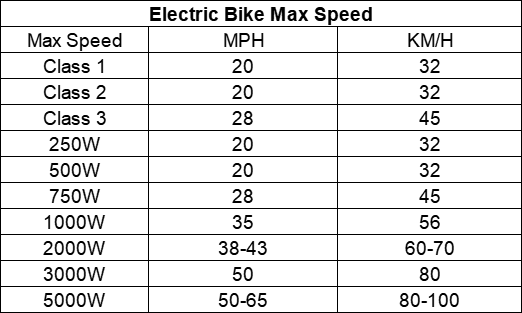If you’re in the market for an electric bike, you’ll want to know what the max speed is for each class. This article will tell you all about the different classes and their max speeds.
What is an e-bike?
An e-bike, or electric bicycle, is a motorized bicycle with an integrated electric motor used to assist propulsion. It provides an extra boost of power to make cycling easier and more accessible.
- “Integrated Electric Motor: An e-bike features an electric motor that is seamlessly integrated into the bicycle’s design.”
- “Assisted Propulsion: The electric motor provides an extra boost of power, making cycling easier and more efficient.”
- “Accessibility and Convenience: E-bikes allow riders to travel longer distances, tackle challenging terrains, and reduce the effort required for pedaling.”
With their electric motor assistance, e-bikes offer a convenient and eco-friendly mode of transportation, empowering riders to enjoy cycling with ease.
What are the different classes of e-bikes?
E-bikes are classified into three classes: Class 1 (pedal-assist only, max speed 20 mph), Class 2 (throttle-assisted, max speed 20 mph), and Class 3 (pedal-assist only, max speed 28 mph). These classifications determine the capabilities and legal usage of e-bikes.
- Class 1 E-bikes: These are pedal-assist only, with a maximum assisted speed of 20 mph.
- Class 2 E-bikes: They have a maximum speed of 20 mph and are throttle-assisted.
- Class 3 E-bikes: These are pedal-assist only, with a higher maximum assisted speed of 28 mph.
By understanding the distinctions between e-bike classes, individuals can make informed decisions and enjoy the benefits of electric cycling within the appropriate legal framework.
How powerful are e-bikes?
E-bike motors are available in different wattage options, including 250 watts, 350 watts, 500 watts, and 750 watts. The power of an e-bike motor influences its performance and capabilities, such as speed and climbing ability.
- 250 Watts: This is a common wattage option for e-bike motors, providing a balanced level of power for everyday commuting and recreational riding.
- 350-500 Watts: E-bikes with motors in this wattage range offer increased power for faster acceleration and improved climbing ability.
- 750 Watts and Above: These higher wattage motors provide even greater power and performance, suitable for off-road riding and tackling steep terrains.
By understanding the power options available, riders can select an e-bike that matches their desired level of performance and meets their specific needs.

Which e-bike is right for you?
Choosing the right e-bike depends on your riding style and needs. Consider factors such as the type of riding you’ll be doing, whether it’s commuting, mountain biking, or carrying cargo. Different e-bike categories, including commuter, mountain, cargo, folding, and utility bikes, cater to various preferences and purposes.
- Commuter E-bikes: Ideal for daily commuting and urban rides, providing convenience and efficiency.
- Mountain E-bikes: Designed for off-road adventures, with features to tackle rugged terrains and steep inclines.
- Cargo E-bikes: Perfect for transporting goods and carrying heavy loads, offering practicality and versatility.
By understanding the different e-bike options available, riders can find the perfect fit for their riding needs, ensuring an enjoyable and efficient e-biking experience.
How to choose the right e-bike for you
Choosing the right e-bike involves considering factors such as frame size, test-riding the bike, selecting the desired frame style, understanding the different classes and types of e-bikes, and ensuring local service availability.
- Frame Size: Determine the appropriate frame size based on your height for a comfortable and ergonomic riding position.
- Test-Riding: Take the opportunity to test-ride the e-bike to assess its feel, braking, shifting, and overall performance.
- Frame Style: Choose a frame style that suits your comfort, riding preferences, and mobility needs, such as high step, low step, or mixte designs.
By considering these factors, you can confidently choose the right e-bike that fits your unique requirements and enhances your cycling experience.
Conclusion
E-bikes come in all shapes and sizes, with different max speeds. This guide will give you an idea of the max speed for each class of e-bike, based on the power output of the bike. If you’re looking to buy an electric bike, knowing what class it falls into is important so that you know how fast it’s capable of going. Be sure to also check out our buyer’s guide to find out more about specific features to look for when buying an e-bike.
